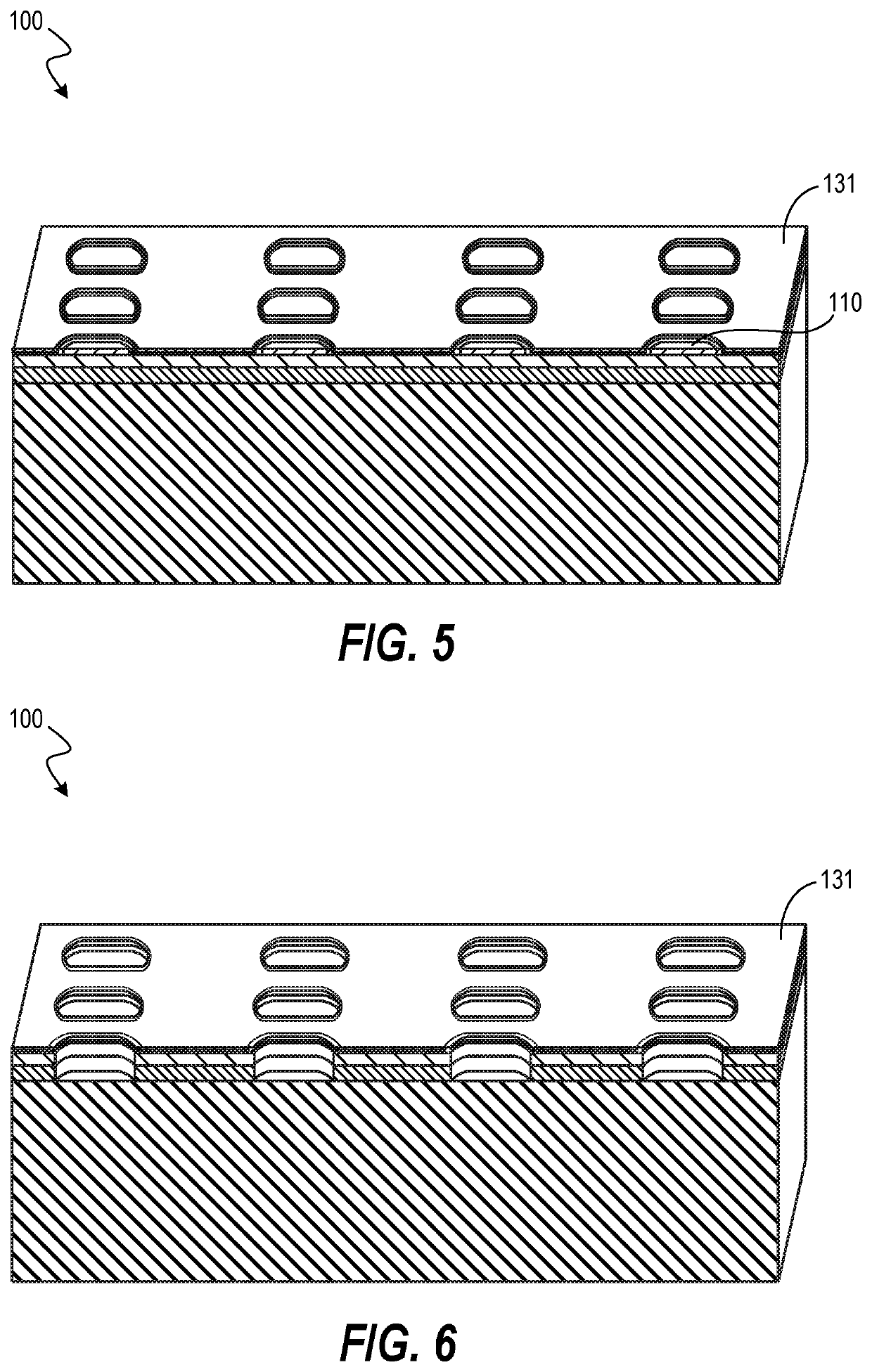Method of advanced contact hole pattering
a contact hole and advanced technology, applied in the field of microfabrication, can solve the problems of reducing throughput, reducing the processing time of photolithography exposure tools, and reducing the yield of final products, so as to improve the definition of patterns, reduce lcdu, and prolong processing time
- Summary
- Abstract
- Description
- Claims
- Application Information
AI Technical Summary
Benefits of technology
Problems solved by technology
Method used
Image
Examples
Embodiment Construction
[0025]Techniques herein include methods for uniform and accurate patterning for microfabrication of various structures and features including contact holes. One technique includes printing and forming an initial size / shape pillar in a relief pattern, and then modifying that pillar and reversing the pattern as a method for generating an etch mask. For example, a larger dimension pillar structure, as compared to a target hole dimension desired, is printed in a layer of photoresist on a substrate, which can then be transferred to an underlying material (such as a carbon hardmask) to facilitate additional processing. Alternatively, the pillar formed of photoresist can be used / modified prior to transfer to an underlying layer. This printed pillar, having an initial size and shape, can then be modified. For example, the pillar can be resized and / or reshaped to a smaller dimension pillar or bump-shaped structure and / or a smoother pillar surface. Additional smoothing can be realized using a...
PUM
| Property | Measurement | Unit |
|---|---|---|
| thickness | aaaaa | aaaaa |
| angle | aaaaa | aaaaa |
| thicknesses | aaaaa | aaaaa |
Abstract
Description
Claims
Application Information
 Login to View More
Login to View More - R&D
- Intellectual Property
- Life Sciences
- Materials
- Tech Scout
- Unparalleled Data Quality
- Higher Quality Content
- 60% Fewer Hallucinations
Browse by: Latest US Patents, China's latest patents, Technical Efficacy Thesaurus, Application Domain, Technology Topic, Popular Technical Reports.
© 2025 PatSnap. All rights reserved.Legal|Privacy policy|Modern Slavery Act Transparency Statement|Sitemap|About US| Contact US: help@patsnap.com



